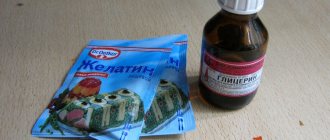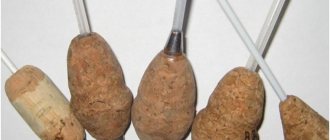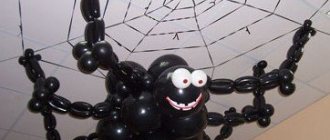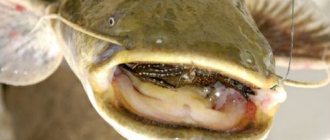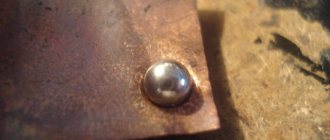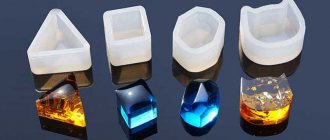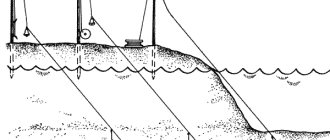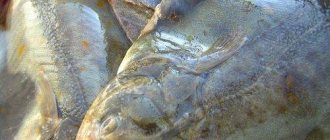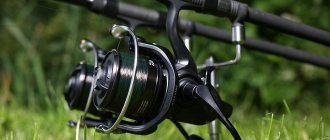Night fishing can not only become an unforgettable adventure and a source of vivid impressions, but also please the fisherman with an excellent catch, since in summer the fish prefer to feed at night, when the heat subsides. With the onset of darkness, the fish's appetite awakens, it becomes more active and bites well.
Of course, fishing in the dark requires special equipment to detect bites. When using a donkey, this is a sound signal. If fishing is carried out with a float rod, the main part of the equipment becomes a luminous float.
Types of luminous floats
The lighting function in such devices is based on different principles, and this, in turn, affects the weight, size and cost of the float. Therefore, when choosing a float for night fishing, you need to clearly understand in what conditions and for what purposes it can be used. And based on this, purchase a signaling device with the appropriate characteristics.
Luminescent
In search of a way to visualize floats for night fishing, the first and easiest was to cover them with luminescent paint, which is distinguished by its ability to emit previously accumulated light in the dark. “Charged” in the sun during daylight hours, the alarm glows in the dark for an hour, then the brightness gradually weakens. In this case, even a faint glow will be noticeable to the fisherman. In addition, such floats do not have to be charged only in daylight. This can be done using a flashlight or mobile phone flash. True, such a “charging” will last for fifteen to twenty minutes, after which the procedure will have to be repeated.
Of course, this causes some inconvenience when fishing, but luminescent signaling devices are the most economical option. Among their advantages are a variety of shapes, sizes, light weight, allowing them to be used for delicate equipment, as well as good sensitivity. All these advantages have led to the fact that this type of float remains the most popular among fishermen who are willing to put up with partial inconveniences.
With reflective film
An equally budget option are signaling devices whose antenna is covered with a reflective film - the kind that is used for road markings or in the production of road signs. When even a dim beam hits an object, it begins to glow. Therefore, it is enough to illuminate the float with a flashlight to see it clearly in the dark. The flashlight does not need to be held in your hand - it is fixed on the shore, directing the beam to a given point. Therefore, such floats are used for fishing from the shore or from a boat for short casts.
They have all the advantages of fluorescent signaling devices, while their use is associated with less hassle and inconvenience.
LED floats
These are some of the most “advanced” models today, which are becoming more diverse and gaining popularity among night fishing lovers. Their body is a transparent capsule in which an LED is placed. The design runs on small batteries, which are easy to replace if necessary, or is equipped with a rechargeable battery. The backlight can be turned off if it is no longer needed.
The float with LED lighting is clearly visible from afar. The battery charge is enough for several fishing trips. Currently, so-called smart night floats are in demand.
When such a signaling device is in the water in a calm state, it glows green, and when there is a bite it begins to glow red. This happens thanks to a sensor element that determines the position of the float in the water.
The only drawback of LED floats is their heavy weight, which does not allow them to be used for delicate equipment.
Firefly floats
The action of this type of luminous floats for night fishing is based on a chemical reaction that occurs inside the device. It works on the principle of a chemical stick, which is used in glow bracelets at concerts and festivals. The body of the float is a transparent shell, inside of which there is a liquid and another capsule with a chemical substance. When the wand is bent, the inner capsule breaks and two substances combine inside the wand, causing it to glow. It lasts from thirteen to fifteen hours, and this is enough for any night fishing without recharge, illumination and replacement of the light element.
The firefly stick is attached to the signaling device antenna using a small tube with regular thread, a pair of rubber bands or cambrics. Fireflies are easily visible in the dark, they are convenient and inexpensive. However, they are not suitable for delicate equipment.
The main thing is not to bend the stick too much so as not to break its outer shell. If the seal is broken and oxygen gets inside, there will be no chemical reaction and the wand will not light up.
Underwater light for catching ripples
Hello, dear friends!
Underwater lighting for fishing is such a useful thing that anyone who doesn’t know about it will get to know this very effective and interesting piece of fishing equipment. Most often, we fishermen use underwater lighting when we fish at night, in winter, from ice. I don’t remember a time when I used underwater lighting during the day or in the summer.
Welcome to subscribe to the channel!
So, night. We are on the ice of a reservoir where ripus, whitefish, smelt, or crucian carp live. It is these wonderful representatives of the fish kingdom that can be successfully caught using underwater lighting.
But no matter how many names of fish I list, of course and most importantly I use underwater lighting when I catch ripus. Ripus in winter is my everything! And I am grateful to the successful development of events, as a result of which we, in the Southern Urals, have a reservoir where the amazingly beautiful, goggle-eyed, cucumber-smelling ripus has been found, breeding, living and thriving for more than a hundred years. Of course, I’m talking about the pearl of the Southern Urals, the mountain lake Uvildy. Since last season, we began to actively catch ripus on Lake Turgoyak. Rhipus also appeared on Lake First, which is located within the capital of the Southern Urals, the city of Chelyabinsk.
However, if on Uvildy the ripus lives and thrives for more than a hundred years, then on other reservoirs we see ripus only periodically. It will appear, then, after a couple of seasons, it will disappear. This frequency of appearance of fish in the reservoir, plus its gigantic size, compared to the ripus from Lake Uvildy, only indicates that these are not ripus at all, but hybrids of ripus and whitefish, which are bred artificially by humans. You, my friend, have probably heard interesting names of fish, for example, sigoripus, peled, cheese. It is these delicious beauties that people most often breed for commercial use of the reservoir. They grow and become healthier year after year. The weight of such fish can be two hundred and fifty grams and two kilograms. For comparison, the record weight of one natural ripus fish from Lake Uvildy is 152 grams. If you catch a heavier ripus, you will be great and can consider yourself a trophy record holder for catching ripus.
In my time, I have seen and used a great many different options for underwater lights, adjustable and non-adjustable, with various options, snap hooks, electrical wires and a light source. Starting from incandescent light bulbs, which drain any car battery to zero in three and a half hours, to LED LED bulbs with varying brightness and energy consumption. As a result, it became clear which underwater lighting for catching ripples is the most convenient and effective today. Come on, my friend, let's list the necessary characteristics of an effective and modern correct underwater lighting.
So, today I am convinced that proper underwater lighting should have: 1. Warm light. The flow of light itself is better to be warm (yellow) than cold (blue). It’s even better when there is ultraviolet in the stream of warm light. 2. Electrical wires must have reliable and non-bulky insulation that does not crack in the cold. For example, such wires are used for audio systems in cars. 3. The flow of light should be bright, saturated, and directional. 4. The brightness of the light flow should be adjustable. Sometimes the brightness of the light source needs to be adjusted. 5. The entire system must have reliable waterproofing.
Now some useful observations: 1. Without turning off the light bulb with LEDs, you can calmly pull it out of the water into the air, and then, while glowing, immerse it in the water again. If you use a light bulb with an incandescent filament, it will burst if you lift it, glowing, out of the hole into the air. 2. LED light bulbs are better than incandescent ones. Primarily due to the fact that LEDs are very energy efficient. Roughly speaking, if you have a light bulb with an incandescent filament, then the capacity of your car battery will not be enough for you to go fishing. With LED bulbs, an 18 amp battery will last you for several fishing trips. Moreover, you will attach to it both underwater lighting and a light in the tent and a heat exchanger fan. It’s also enough to recharge your phone, if necessary. When fishing for ripus, I rarely lower the underwater light bulb deeper than three meters. In rare cases, when the bite is frankly inactive, I play a little with the immersion depth of the underwater illumination lamp.
However, one publication cannot cover and cover all issues, even if they are questions about lighting. It's time to watch the latest video about your favorite hobby, get a boost of good mood, write a comment and like it.
Dear friend, get ready to watch the latest video and take the trouble to subscribe to the channel to get more joy from our one and only life
Watch, relax, comment
Awards to all!
Meet me fishing
Carbon flappers for catching ripus https://zamyatin.club/na-kakie-karbonovye-khlopushki-lovit-ripusa/
Grizzly folding bed details here https://zamyatin.club/gde-najjti-krovat-raskladushku-grizli-dlya-doma-rybalki-i-otdykha-na-prirode/
For fishing with spoons https://musurok-lures.com/?tracking=5c51680d37e3e
Evgeny Zamyatin on social networks https://www.facebook.com/evgeny.zamyatin
It is difficult to continue developing and maintaining this site and channel without your help.
If you liked the content please make a donation. Donations can be transferred to a Sberbank card number
Data for parcels: Chelyabinsk city, recipient Evgeniy Nikolaevich Zamyatin, recipient phone number 8 909 743 86 33
To order Underwater lighting you need to fill out this form
How to make glowing floats with your own hands
Making a night float for fishing with your own hands is not difficult and does not require a lot of money. Therefore, many fishermen prefer to make these devices at home on their own, taking into account their own requirements for the quality and characteristics of the product.
Using fluorescent paints
To work, you will need a ready-made float and fluorescent paints that cover the alarm antenna. As an option, a capsule made from scrap material is coated with paint. After the paint has dried, the capsule is attached to the float antenna using a piece of nipple or a tube from a used firefly.
Made from reflective foil
To make it, you will need to buy reflective foil and waterproof glue for rubber. The procedure is as follows:
- The foil is cut into strips about five millimeters wide.
- The ribbons are placed lengthwise on the antenna (do not wrap!) and glued with glue. It is better to take light-colored foil - even a small backlight will be enough to visualize the float.
With batteries
It is quite possible to make even such a seemingly complex device yourself. For this you will need:
- Thick straw for cocktails.
- Light-emitting diode.
- Fum tape.
- 2 button cell batteries model LR-251.
- Part of a float with a ring.
Manufacturing procedure:
- The corrugated part of the straw is cut off. The flat part will become a float.
- The batteries are inserted inside the tube, one on top of the other, inserted shallowly, just below the edge.
- The straw is wrapped with fum tape, which is fixed in the tube at the end opposite to the batteries.
- The LED is installed already while fishing. Its legs are placed between the walls of the tube and the batteries. If it does not light up, the LED is removed and reinserted, changing the polarity.
This design is inexpensive, but quite functional. Especially if you compare the costs of its production with the prices of store accessories.
DIY making
There are no problems in making your own fireflies for fishing. The current selection of elements for creating various homemade devices is very extensive and includes a wide variety of components.
Homemade spinnerbait
There are several ways to make a backlight for a fishing rod, float or quivertip with your own hands. They can be based on a variety of principles of operation of the light source, i.e. firefly can be:
- chemical;
- glowing;
- reflective;
- electronic.
Let's look at each method in more detail.
Chemical fireflies
Making such a device yourself is relatively easy. You just need to first prepare several small containers for the fireflies, a container in which the luminous composition will be mixed and some kind of device for pouring the luminous liquid onto the bodies of the fireflies.
As a firefly body, you can use any sealed container of small volume (2-5 ml) with an elongated shape. Mixing the components can be done in a glass container, and the resulting glowing composition can be poured over the fireflies, for example, using a 10 ml medical syringe.
Ampoules with lids are one of the firefly body options.
Almost all luminous liquids have approximately the same composition: it contains luminol and something that creates an acidic environment. There are many such mixtures. Let's consider making one of the simplest luminous compositions; For this you will need the following components:
- luminol – 0.2 g;
- dry potassium hydroxide powder – 30 g;
- dimexide – 40 ml;
- any fluorescent dye of the desired shade – 5 mg.
The components are stored in separate containers and mixed immediately before use.
Attention! Potassium hydroxide (KOH) is an extremely active substance. Its other name is potassium alkali. You need to work with it carefully, avoiding contact with the skin of your hands.
The mixture is prepared as follows:
- Dimexide is poured into a glass container and dye is added. Mix well.
- Potassium hydroxide is added to the resulting mixture and mixed well again.
- Close the container with a lid. As a rule, the solution is already glowing.
- After 2-3 minutes, open the lid and use a syringe to pour the luminous composition over the fireflies.
- The firefly containers are securely sealed and attached to the gear.
Fireflies made in this way retain the ability to glow for more than 1 hour. Next, you need to make the luminous composition again.
The only advantage of fireflies of this type is their low cost. But they have a lot of disadvantages: a relatively short glow time, the need to work with several (including dangerous) chemicals, the difficulty of sealing luminous containers.
Therefore, such devices made independently are justified only in the case when there is a large amount of raw materials at hand and there is nowhere to put it. If the described materials are not at hand, then it is better to use another method of making a firefly.
Using a luminous coating
This is perhaps the easiest way to make fishing fireflies. To do this, you just need to paint those parts of the gear that should glow. The advantages of this solution are its simplicity and one-time use: having applied the paint once, you don’t need to do anything else.
The disadvantage is that this kind of light sources need regular replenishment of their “luminous resource”. Simply put, once every 20-30 minutes they should be illuminated with a bright enough light so that they can luminesce again.
There is a huge variety of colorful coatings with the addition of phosphor that can glow in the dark for quite a long time. Moreover, the variety of choices does not rest only on color - light-accumulating paints can also have a different base - be oil, enamel, acrylic, etc.
Luminescent paints in the form of a spray are the most popular solution today.
It is recommended to use acrylic paints for painting fishing gear (floats, nods, fishing rod tips, etc.). They are chemically neutral and do not dissolve the material from which, for example, floats or tails can be made. Gear can be painted in any convenient way and in any number of layers.
Models with reflective coating
As in the previous case, those parts of the tackle that should be visible are painted. However, this method works differently: in this case, there must be a light source on the shore that will constantly highlight the colored areas. The advantages of this method include the higher brightness that reflective paints provide compared to light-accumulating paints.
Such a source usually emits light that is not visible to the human eye (ultraviolet or infrared). When this light hits an area painted with fluorescent paint, it causes the paint to glow in the visible range. Naturally, objects on which paint is not applied will not be visible in the dark.
Portable currency detector - optimal illumination for fluorescent fireflies.
Any ultraviolet radiation device can be used as such a source. For example, a UV lamp or UV LED of a portable currency detector. It is simply placed on the shore, turned on and directed with the emitting part in the direction where the fireflies are located.
Attention! Even low levels of ultraviolet radiation are harmful to the eyes. It is advisable to reduce the beam angle of the UV lamp using any (at least cardboard) shielding so that it does not shine into the fishermen’s eyes. Reflected light no longer poses any danger.
How much do floats cost for night fishing?
There is no doubt that the more technically complex a product is, the more expensive it is. It is also clear that the cost of a phosphorus fishing float is an order of magnitude higher than a regular one.
Therefore, of all the types of signaling devices considered, the most expensive are LED ones. Their price ranges from four to seven dollars. e. and is directly proportional to the mass of the product.
The cost of luminescent models will be about 1 USD. e. per piece. It is not at all necessary to buy branded products from well-known companies. Cheap Chinese-made floats have proven themselves in business. They can serve the owner for more than one season.
Fireflies are in the same price range. However, you need to take into account that when fishing you should take a few sticks in reserve, in case the product for some reason does not work. Each fishing trip will require a new supply of fireflies, so using them will cost more than buying a fluorescent or reflective float.
We recommend reading
Interview with Elena Lavrova about float fishing, equipment, and favorite gear We talked with Elena Lavrova, a participant in Russian and international float fishing competitions. Elena…
